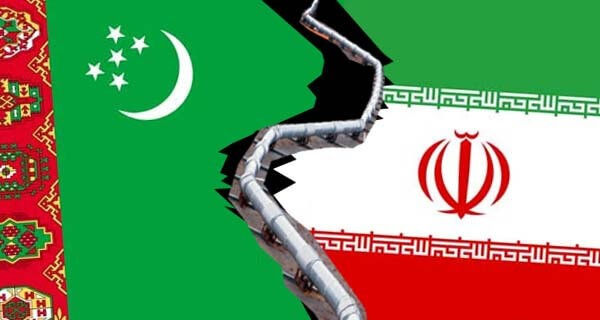Ashgabat Turns to Arbitration over Gas Debt Tiff with Tehran
- Mariana Liakopoulou
- Dec 15, 2017
- 4 min read

On December 5, Turkmen President, Gurbanguly Berdimuhamedov, mandated the head of state gas company ‘’Turkmengaz’’, Myrat Archaev, to submit the gas dispute with Iran to international arbitration. Mr. Archaev briefed the President of Turkmenistan during a conference call that talks with Iranian representatives over arrears had not borne fruit and that Iran was after all of the opinion that the bilateral debt row should be resolved in international arbitration.
This change in stance by the National Iranian Gas Company (NIGC), which one month ago was mulling an out-of-court settlement of its quarrel with Turkmengaz, as Managing Director Hamid-Reza Araqi was quoted as saying, led to Mr. Beridmuhamedov ordering for the preparation of all documents necessary in order to take recourse to international arbitration. It has not yet been made known to which court will the parties eventually turn.
As of early 2017, Ashgabat has decided to shut off gas flows to neighboring Iran accusing it of some $2bn of accumulated debt, dating back more than a decade. In Tehran’s view, Turkmengaz exploited for its own benefit a gas shortfall faced by Iran throughout the notably cold winter of 2007-2008, causing a nine-fold price increase of $360 per 1000BCM, instead of the usual $40 tariff. Furthermore, Iran claims that it had acquired its debt in the course of the sanctions years, when banking restrictions had locked the country out of the global financial system, and that it has already partially paid back Turkmengaz with goods and engineering services. Unlike the gas-abundant South, northern and northeastern Iranian regions remain heavily reliant on gas imports from Turkmenistan due to their poor interconnection with the national grid. During wintertime, Iran was said to have been importing over 30MCM/d of Turkmen gas, although this figure had dropped by half several months before the 2017 cutoff was put into effect.
In late 1997, when the 200km Korpeje-Kordkuy pipeline connecting Turkmenistan and Iran was inaugurated, the at the time Presidents Saparmurat Niyazov and Mohammad Khatami had announced conclusion of a 25-year supply deal. However, the terms of this agreement have been ever since multiply rewritten -and still breached. For instance, Turkmenistan had once again used the tap weapon back in 2006, when it halted gas shipments imposing a nine-fold price hike, with which Iran temporarily accepted to put up.
In the backdrop of a sharpening currency crisis, following Gazprom’s 2016 decision to cease purchasing Turkmen gas, the question logically arises as to what extent it would serve Ashgabat’s interests to become further embroiled in this ever-going payment dispute. Having been left with a single viable export route, the one towards China who hopes to have doubled by 2020 the annual Turkmen gas volumes of 30BCM it currently receives, the holder of the world’s fourth largest natural gas reserves is equally striving to get its gas westward. It is, therefore, no wonder that Turkmenistan has proposed a gas swap deal with Iran in order for its gas to reach Turkey via the Trans Anatolian Pipeline (TANAP). However, given the fact that negotiations failed and it is now up to international arbitration to deal with their debt issue, Iran should by no means be expected to give its consent to the aforementioned idea. Besides, as a country aspiring to supply TANAP by taking advantage of its own huge southern gas reserves, Iran wouldn’t seem willing to re-export Turkmen gas to Turkey because it considers Turkmenistan a competitor regarding the southeastern European gas markets, that are set to be interconnected through the Southern Gas Corridor pipeline network. In other words, an Iranian-Turkmen gas swap deal would have little chance of becoming effective, since both states keep their eyes firmly fixed on TANAP.
Nevertheless, the situation is by far not the same concerning swaps of Turkmen gas with Azerbaijan and Armenia. SOCAR is always interested in buying gas from Turkmenistan during summer months, in order to store and resell it at higher prices in the winter. Meanwhile, Armenia has even offered to act as an intermediary in resolving the Turkmen-Iranian gas conflict by paying off Tehran’s debt to Ashgabat by barter in exchange for Iranian gas shipments to Armenia, even though such a proposal would be most likely rejected.
Finally, the timeframe of the case settlement in international court also plays a major role with respect to another yet project of mutual interest for the two countries that would help Turkmenistan reduce its export overreliance on the Chinese market. As Mr. Araqi recently confirmed, negotiations are currently underway on a deal to swap Turkmen natural gas to the Persian Gulf region, providing Tehran moves forward with construction of the required gas liquefaction facilities. Apart from Turkmen gas exports through Iranian territory, Iran is also exploring the option of resuming oil swaps with fellow Caspian littoral states, as it already did with Russia last week.
In parallel, Iran has launched in August the 170km-long Damgan-Neka pipeline, with a capacity of 40MCM/d, in order to reduce dependence on Turkmen gas deliveries. Should estimations that the particular pipeline is going to fully replace imports from Turkmenistan prove accurate, Iran might possibly not need to worry about future gas standoffs with its neighbor.
Available online at: http://www.caspianpolicy.org/energy/caspian-energy-insight-december-14-2017/#2







Comments